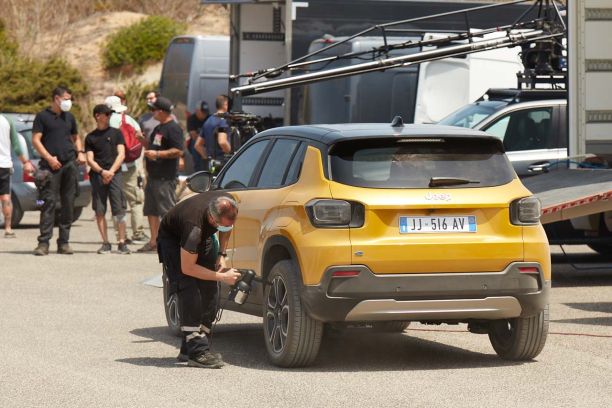American, but not crazy big. Is the Compass worth considering?
If you have a wide choice in anything at the moment, it is in compact crossovers. They come in all shapes and sizes – but if you’re really honest, there’s really only one you’d like most. You know what we mean, don’t you? No, forget those German brands for a moment. And that Range Rover too. Um, Toyotas are good things yes, but you’re missing our point. Listen up: you want a Jeep. Yes right? The founder of (and even synonymous with) the off-road class? Exactly, that’s what we thought.
Well, you’re in luck, because Jeep has also been building cars for a while that are, well, closer to cars than to military vehicles. The Compass is one such model, and while its original 2007 appearance still makes us chuckle, the second generation is a cool thing. Modest yet tough, with a more successful design in our opinion than its big brother, the Cherokee. It lagged a bit behind competitors on details – the interior, gadgets, driving aids, that sort of thing. With this renewed Jeep Compass S (here as 4xe), the brand has now rectified this.
What’s different about the Jeep Compass S 4xe?
The exterior did not change substantially, although the LED daytime running lights and the bumpers, for example, are new. Inside it’s a different story: the dashboard has been completely revised – it feels like ten years apart – and now contains fresh connected infotainment with Apple CarPlay/Android Auto. Driving assistance that recognizes signs, pedestrians and fatigue is now on board, and Highway Assist steering assistance will soon be available. There is more storage space and the overall appearance and materials are of a higher level.
As before, the Compass is available as a plug-in hybrid, called 4xe. That is inevitably the most interesting in the Netherlands, since it is hardly more expensive than the 90 hp less powerful 1.3T. The S version that we drive is the top version with black roof and ditto accents, thick leather, pounding audio and the largest touchscreen. The more mud-oriented Trailhawk is a bit cheaper and we like it even more, but hey. You actually get the options ‘4WD Low’ and ‘4WD Lock’ and everything is undiminished jeepy, from the large door handles and the thick steering wheel to the sturdy, even somewhat stout chassis. The unyielding splashes of the Jeep Compass S 4xe, and that’s how it should be.
Economical driving with your plug-in hybrid Jeep
The hybrid matters – fully electric driving, storing charge for later – can be found grouped on the left side of the dashboard. You don’t have to endlessly swipe through menus, but you can just press on small plastic surfaces and off you go. Really a find, more brands should do. Hidden in the screen is the possibility to recharge the battery via the petrol engine, which can sometimes be useful, but does not go very smoothly. We prefer to just freeze the electricity on the highway, so that we can roll around quietly and cleanly later in the city.
That goes well, by the way: the e-motor on the rear wheels brings quite a bit of momentum on its own. If the four-cylinder 180 hp is added on the other side, the Compass can rightly be called smooth. However, it’s at its best when you’re either driving normally or at full throttle – in moderate rush, it can sometimes have a bit of trouble deciding which drivetrain should do what. So if you provide flexibility yourself, he will give it to you.
We find it undiminished charming, that Jeep Compass S 4xe: a good size for Europe with a certain American pride. It quickly becomes pricey (it starts at 34k; this version costs well over 50k), but so do its competitors. And they can’t claim one thing…
Specifications Jeep Compass S 4xe
Engine
1,332 cc
four-cylinder turbo hybrid
240 hp @ 5,750 rpm
270 + 250 Nm @ 1,850 rpm
Drive
four wheels
6v automatic
Performance
0-100 km/h in 7.0 sec
top 200 km/h
Consumption (average)
1.9 l/100 km
44 g/km CO2 (A label)
Dimensions
4,394 x 1,819 x 1,645mm (LxWxH)
2,636mm (wheelbase)
1,835 kg
37 l (petrol)
420 / 1,239 l (luggage)
Prices
€ 50,290 (NL)
€49,190 (B)























